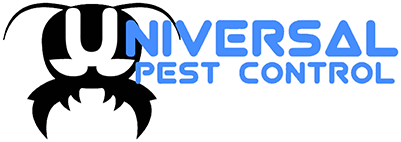

Termite Control in Union County
Roselle’s Experienced Termite Removal Specialists
Effective Termite Control in Union County: Protect Your Home
Termites are one of the most destructive pests in the world, with an estimated 4,000 species inhabiting every corner of our planet. While many are harmless and even beneficial to their environment, only a handful have been known to invade and damage homes. These include subterranean, Formosan, and drywood termites — all of which can be found throughout Union County.
Combat Subterranean Termites in Union County Homes
The most common type of termite infestation in Union County is the subterranean variety. Subterranean termites live in large colonies underground and travel upwards in search of food sources like wood and other cellulose materials. They build mud tubes between their nests and their food sources and seek out moisture-rich environments like wood that is exposed to high humidity or has suffered water damage. They can quickly cause costly structural damage if left unchecked, so it’s important to contact a pest control specialist right away if you notice any signs of an infestation.
Formosan Termites: Union County's Formidable Foe
Formosan termites are native to Asia but have been introduced to many parts of the world including Union County through international shipping containers carrying infested wooden materials. Unlike subterranean termites, they do not require direct contact with soil or moisture as they are capable of producing their own water from metabolic processes within their bodies. Formosan colonies tend to be larger than those built by other species — often containing millions of workers — making them much more difficult to eradicate once established on your property.
Identify and Eliminate Drywood Termites in Union County
Drywood termites are another invasive species found in Union County though not as commonly as subterranean or Formosan varieties. As their name implies, they do not need contact with soil or a water source as they can get all the moisture they need from consuming wood inside walls or roofs where there are high humidity levels due to poor ventilation or plumbing leaks. Drywood termite colonies can easily spread across large areas because they produce winged reproductives (alates) that fly off in search of new sites for establishment once mature enough -- meaning multiple nests may exist on your property at once without you noticing until too late!
The Most Common Termite Infestations
Termites are one of the most destructive pests in the world, with an estimated 4,000 species inhabiting every corner of our planet. While many are harmless and even beneficial to their environment, only a handful have been known to invade and damage homes. These include subterranean, Formosan, and drywood termites — all of which can be found throughout Union County.
Subterranean Termites
The most common type of termite infestation in Union County is the subterranean variety. Subterranean termites live in large colonies underground and travel upwards in search of food sources like wood and other cellulose materials. They build mud tubes between their nests and their food sources and seek out moisture-rich environments like wood that is exposed to high humidity or has suffered water damage. They can quickly cause costly structural damage if left unchecked, so it’s important to contact a pest control specialist right away if you notice any signs of an infestation.
Formosan Termites
Formosan termites are native to Asia but have been introduced to many parts of the world including Union County through international shipping containers carrying infested wooden materials. Unlike subterranean termites, they do not require direct contact with soil or moisture as they are capable of producing their own water from metabolic processes within their bodies. Formosan colonies tend to be larger than those built by other species — often containing millions of workers — making them much more difficult to eradicate once established on your property.
Drywood Termites
Drywood termites are another invasive species found in Union County though not as commonly as subterranean or Formosan varieties. As their name implies, they do not need contact with soil or a water source as they can get all the moisture they need from consuming wood inside walls or roofs where there are high humidity levels due to poor ventilation or plumbing leaks. Drywood termite colonies can easily spread across large areas because they produce winged reproductives (alates) that fly off in search of new sites for establishment once mature enough -- meaning multiple nests may exist on your property at once without you noticing until too late!

Schedule Your
Appointment
& Take Back
Your Space
Termite Infestation Warning Signs
As destructive as termites are, they often go undetected by homeowners until it's too late. This is because termites have evolved to be incredibly stealthy and skilled at hiding their presence from us. They can quickly cause costly structural damage if left unchecked, so it’s important to be aware of the warning signs that may indicate a termite infestation on your property.
Some warning signs of activity to watch out for:
- Mud tubes: Subterranean termites build mud tubes between their nests and food sources as a way to protect themselves while traveling above ground. If you find any suspicious-looking mud tubes around your home or near wood structures, this could indicate an active infestation.
- Discarded wings: Reproductives (alates) shed their wings after mating, often found near windowsills or doorsills where they have flown in from outside colonies. If you spot any discarded wings around these areas, contact a pest control specialist right away for further inspection!
- Wood damage and hollowed-out structures: Termites consume wood as part of their diet and will leave behind telltale signs such as hollowed-out structures, fractured wood grain, or “sawdust”-like piles of wood fragments. These indicate that termites may live in your walls or roof.
At Universal Pest Control, we take pride in offering professional solutions for our customers’ needs when it comes to dealing with termite infestations — no matter what type you may have on your property. Our experienced technicians use the latest tools and techniques combined with industry-leading practices for complete eradication and prevention against these destructive pests so you can trust us with all your pest control needs!
Contact us today at (908) 403-3115 or complete our online form to request a free termite control estimate or for more information about how we can help protect you against these unwanted invaders!

The Method to Our Madness
Our multi-step system has proven time and time again to work efficiently for maintaining round the clock pest control. We’ll provide you with a customized plan is designed to get pests out your home and keep them out year-round.
-
Great Quality and Ethical Standards with Every Service We Provide
-
We Are Experts In Pest Control Services With Years of Experience
-
We Offer Free Consultations & Estimates
-
Our Services Are Always Done In A Fast & Timely Manner
Contact Universal Pest Control Today
Schedule A Service Appointment



